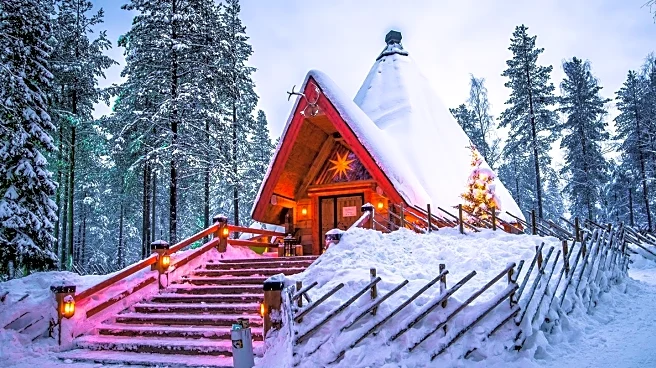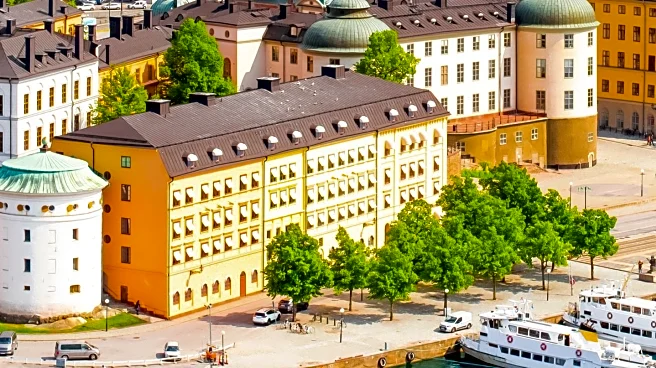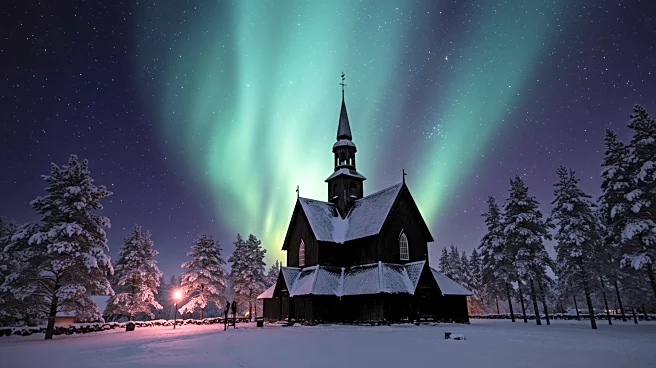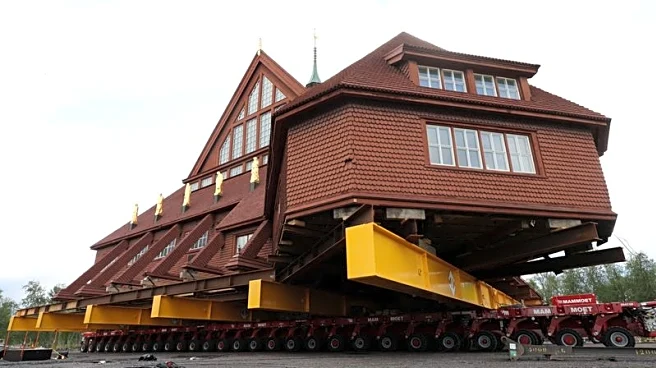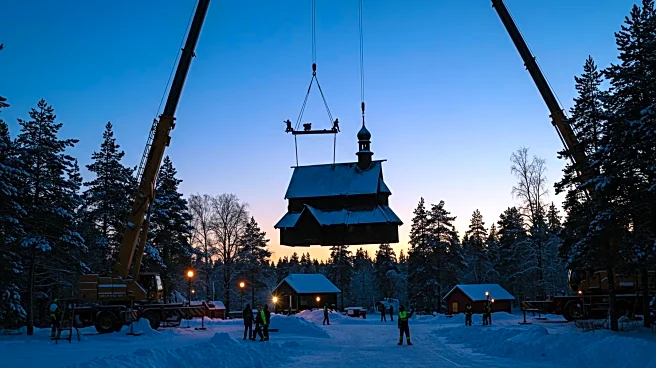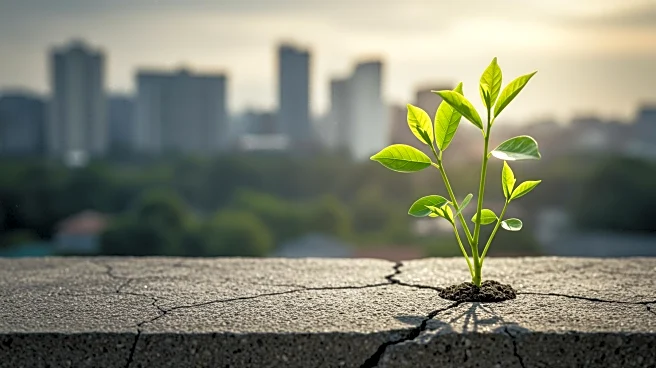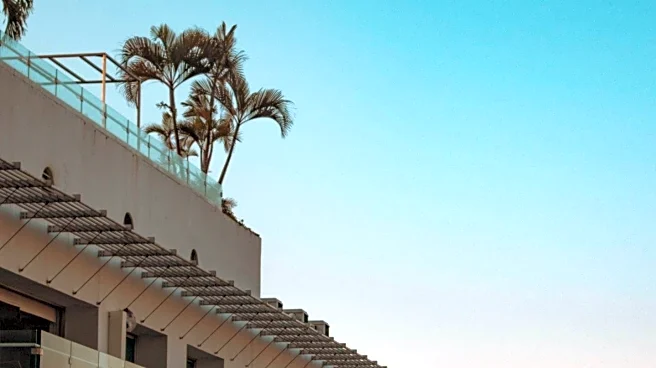What's Happening?
The Kiruna Church, a beloved wooden structure in Sweden, is being relocated to avoid destruction by the expansion of the world's largest underground iron-ore mine. The church, along with its belfry, is being moved 3 miles east as part of a broader effort to relocate the town of Kiruna. This move is necessitated by the mine's expansion, which threatens to engulf the town. The relocation process, which began with a blessing from the church's vicar, Lena Tjärnberg, involves lifting the church onto beams and wheeling it across town. Thousands of spectators have gathered to witness this engineering feat, which is being livestreamed by Sweden's national broadcaster, SVT. The church, completed in 1912, is a significant cultural landmark, having been voted the best building of all time in Sweden in a 2001 poll.
Why It's Important?
The relocation of Kiruna Church highlights the complex interplay between industrial expansion and cultural preservation. The move underscores the challenges faced by communities situated near large-scale industrial operations, where economic interests can conflict with cultural and environmental concerns. The relocation is a testament to the engineering capabilities required to preserve historical structures in the face of industrial growth. It also raises questions about the long-term sustainability of such mining operations and their impact on local communities, including the Sami Indigenous people. The event has drawn significant public interest, reflecting the cultural importance of the church and the broader implications of the mine's expansion.
What's Next?
The relocation of Kiruna Church is part of a larger effort to move the town's center to a safer location. This process, which began in 2004, involves relocating several buildings to prevent them from being swallowed by the expanding mine. The church is expected to reopen in its new location by the end of 2026. The move has sparked discussions about the future of the region, particularly concerning the impact on local communities and the environment. Stakeholders, including the Sami reindeer herding organizations, are concerned about the potential disruption to traditional practices and livelihoods.
Beyond the Headlines
The relocation of Kiruna Church raises broader ethical and cultural questions about the preservation of heritage in the face of industrial progress. It highlights the need for a balanced approach that considers both economic development and cultural preservation. The event also serves as a reminder of the potential consequences of unchecked industrial expansion on local communities and the environment. As the world grapples with similar challenges, the Kiruna Church relocation could serve as a case study for future efforts to balance industrial growth with cultural and environmental preservation.
